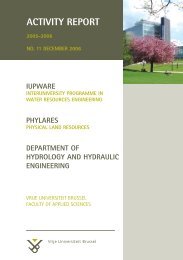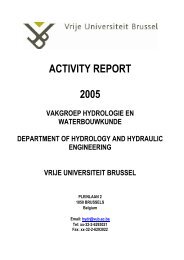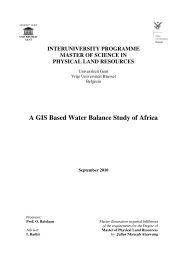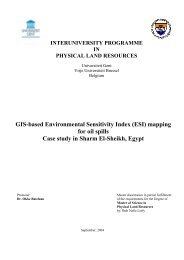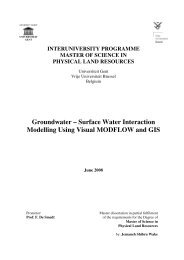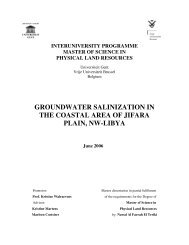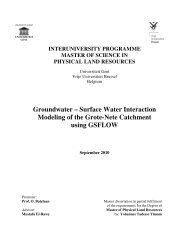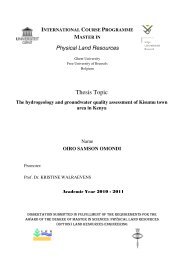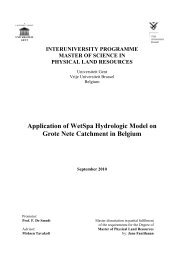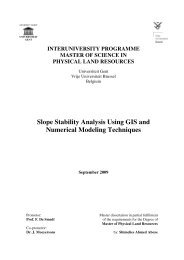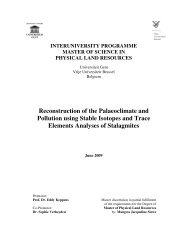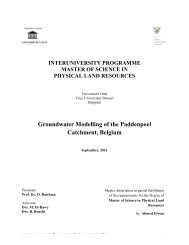C O N T E N T S - Physical Land Resources - Vrije Universiteit Brussel
C O N T E N T S - Physical Land Resources - Vrije Universiteit Brussel
C O N T E N T S - Physical Land Resources - Vrije Universiteit Brussel
You also want an ePaper? Increase the reach of your titles
YUMPU automatically turns print PDFs into web optimized ePapers that Google loves.
improvement in the status of the body of water. Hence, from the reference of EU WFD, aclear stepwise approach has been proposed in this thesis report for Bagmati River BasinManagement Planning with more stakeholders’ participation. Finally, it can be expectedthat the approach as per the local situation, could be able to ensure sustainable riverbasin management by achieving the qualitative and quantitative objectives of BagmatiRiver Basin Management Planning in the context of groundwater.SENGENDO Godfrey IsaacIntegrated River Modelling for the River Dender in Flanders, BelgiumPromotor: P. WillemsFrom ages past, man has always sought to settle in river basins with a notion that theirresources would inexhaustibly support different human activities such as agriculture,transportation, water supply, etc. Over time, however, with man’s increased exertion onthese resources due to rapidly increasing populations, urbanisation, various rivermodifications, escalating pollution of freshwaters, coupled with the imminent climatechange and variability, the sustainability and continued usefulness of these waterresources and freshwater ecosystems pose major challenges. It is therefore imperativeto properly identify and study the different interactions and interdependencies of thenatural components of river systems, along with their response to anthropogenic orhuman influences, in order to sustainably maximise the beneficial uses of theseresources whilst maintaining or enhancing their ecohydrological functionality andquality. This forms the basis of integrated river basin management. In light of the aboveholistic approach, this research set out to develop an integrated river model to simulatethe flow and water quality of the Dender river and its main tributaries of Mark,Molenbeek and Bellebeek, while taking into account the different sources of water andpollution such as natural runoff, effluent from wastewater treatment plants, untreateddomestic pollution, industrial and diffuse agricultural pollution, in order to study theirimpacts on the river. The model was developed using the MIKE 11 river modellingsoftware of DHI Water & Environment. An existing detailed hydrodynamic model wasmodified, calibrated and validated using water levels upstream and downstream of the8 hydraulic structures along the main Dender river, and by evaluating its performancewith regard to discharge simulation at 2 limnigraphic stations upstream anddownstream of the river. The water quality model was calibrated by comparison withimmission measurements of dissolved oxygen, biochemical oxygen demand, nitrate-- 23 -




